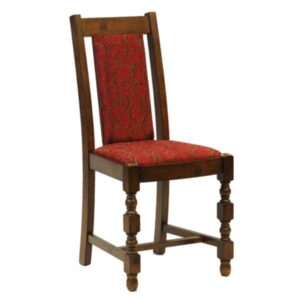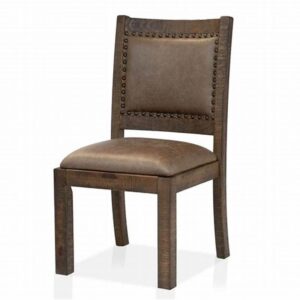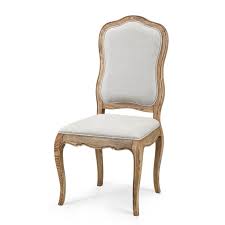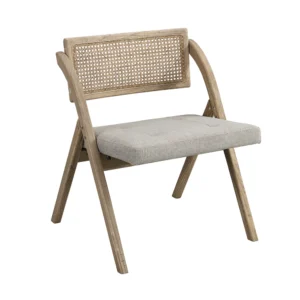Dining chairs are an essential component of any dining room, serving both functional and aesthetic purposes. They provide comfort during meals while also contributing to the overall ambiance and style of the space. Let’s delve into the rich history, diverse styles, materials, and essential tips for selecting the perfect dining chairs.
A Brief History:
The history of dining chairs dates back to ancient civilizations. In ancient Egypt, chairs were often symbols of power and status, adorned with intricate carvings and made from luxurious materials like ebony and ivory. The Greeks and Romans used chairs with backs and cushions, typically reserved for nobility and high-ranking officials.
During the Middle Ages, dining chairs became more common among the upper class in Europe, although they were still relatively rare compared to stools and benches. The Renaissance period saw a resurgence of interest in craftsmanship and design, leading to the creation of elaborately carved wooden chairs.
By the 18th and 19th centuries, dining chairs became more accessible to the middle class with the advent of mass production techniques. This era saw the rise of iconic styles such as the Chippendale, Queen Anne, and Victorian chairs, each reflecting the design trends of their respective periods.
Styles of Dining Chairs:
Dining chairs come in various styles, each with its own unique characteristics. Some of the most popular styles include:

Traditional: Characterized by ornate detailing, curved legs, and rich upholstery, traditional dining chairs exude elegance and sophistication.

Modern: Clean lines, minimalist design, and sleek finishes define modern dining chairs, perfect for contemporary interiors.

Transitional: Combining elements of both traditional and modern styles, transitional dining chairs offer a versatile and timeless aesthetic.

Rustic: Featuring natural materials like wood and distressed finishes, rustic dining chairs add warmth and charm to any dining space.

Mid-Century Modern: Inspired by the design aesthetics of the mid-20th century, these chairs often feature iconic shapes, organic forms, and vibrant colours.

Industrial: Industrial dining chairs are characterized by raw materials such as metal and reclaimed wood, with a focus on functionality and utilitarian design.

Farmhouse: With a focus on simplicity and comfort, farmhouse dining chairs typically feature sturdy construction and natural finishes.

Contemporary: Bold shapes, innovative materials, and creative designs define contemporary dining chairs, making them ideal for eclectic interiors.

French Provincial: Elegant curves, intricate carvings, and plush upholstery are hallmarks of French Provincial dining chairs, evoking a sense of timeless luxury.

Scandinavian: Known for their clean lines, light colours, and ergonomic design, Scandinavian dining chairs prioritize comfort and functionality.
Types of Dining Chairs:
In addition to different styles, dining chairs also come in various types to suit different preferences and needs:

Upholstered Chairs: Featuring cushioned seats and backs, upholstered dining chairs provide added comfort and can be upholstered in a variety of fabrics or leather.

Wooden Chairs: Classic and versatile, wooden dining chairs come in a range of finishes and designs, from traditional to contemporary.

Metal Chairs: Sleek and durable, metal dining chairs are perfect for modern and industrial-style spaces, offering a minimalist aesthetic.

Wicker/Rattan Chairs: Ideal for outdoor dining areas or coastal-inspired interiors, wicker or rattan dining chairs add texture and warmth to any setting.

Ghost Chairs: Made from transparent materials like acrylic, ghost chairs create a sense of spaciousness and modernity, perfect for small spaces.

Banquette Seating: A built-in bench or banquettes offer a space-saving alternative to traditional dining chairs, perfect for cosy breakfast nooks or dining areas with limited space.

Bentwood Chairs: Crafted from steam-bent wood, bentwood chairs are lightweight yet durable, featuring elegant curves and timeless appeal.

Eames Chairs: Inspired by the iconic designs of Charles and Ray Eames, Eames chairs are known for their ergonomic shapes and moulded plastic or plywood construction.

Slipper Chairs: Low-profile and armless, slipper chairs are versatile and can be used not only in the dining room but also as accent seating in other areas of the home.

Folding Chairs: Ideal for occasional use or when extra seating is needed, folding chairs are practical and easy to store when not in use.
In summary, while “style” refers to the visual appearance and design elements of dining chairs, “type” pertains to their functional design features and intended use. Both aspects are important considerations when selecting dining chairs to complement the overall décor and meet the specific needs of the dining space.
Materials:
Dining chairs can be made from a variety of materials, each offering its own unique characteristics:
Wood: Classic and timeless, wood is a popular choice for dining chairs, available in a range of finishes such as oak, walnut, cherry, and mahogany.
Metal: Sleek and modern, metal dining chairs are durable and easy to clean, often made from materials like steel, aluminum, or wrought iron.
Upholstery: Fabric or leather upholstery adds comfort and style to dining chairs, with a wide range of colors, patterns, and textures to choose from.
Wicker/Rattan: Natural and rustic, wicker or rattan dining chairs bring a touch of the outdoors inside, perfect for casual dining spaces.
Plastic/Acrylic: Lightweight and versatile, plastic or acrylic dining chairs are easy to clean and come in a variety of colours and transparent finishes.
The Dos and Don’ts When Purchasing Dining Chairs:
When shopping for dining chairs, consider the following dos and don’ts to ensure you make the right choice:
Do:
- Measure your dining space to ensure the chairs fit comfortably around the table without overcrowding.
- Consider the overall style and theme of your dining room to choose chairs that complement the existing décor.
- Opt for high-quality materials and construction for durability and longevity.
- Test the comfort of the chairs by sitting in them to ensure they provide adequate support during meals.
- Mix and match chair styles for an eclectic and personalized look, but ensure they share a common element such as colour or material.
Don’t:
- Don’t sacrifice comfort for style. Ensure the chairs are comfortable to sit in for extended periods.
- Avoid overcrowding the dining space with too many chairs. Leave enough room for guests to move around comfortably.
- Don’t overlook maintenance requirements. Consider the ease of cleaning and upkeep when selecting materials for your dining chairs.
- Avoid choosing chairs that overpower the dining table or clash with other furniture pieces in the room.
- Don’t forget about ergonomics. Choose chairs that provide adequate support for the back and promote good posture during meals.
To conclude, Dining chairs are more than just functional furniture pieces; they are an essential element of dining room décor, adding style, comfort, and personality to the space. With a wide range of styles, types, materials, and design considerations to choose from, selecting the perfect dining chairs requires careful consideration and attention to detail. By understanding the rich history, diverse styles, and essential dos and don’ts of purchasing dining chairs, you can create a dining space that is both inviting and stylish, perfect for gathering with family and friends to enjoy delicious meals and create lasting memories.




